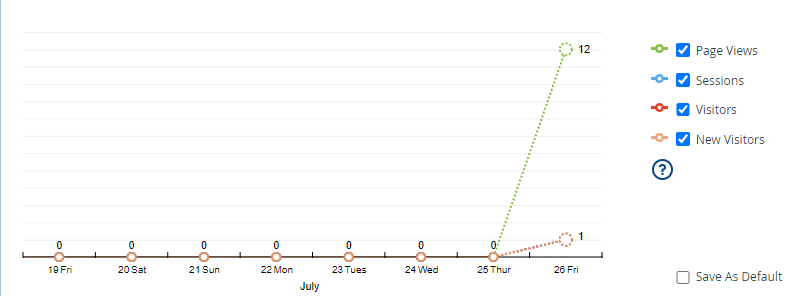RESILIENSI ANAK PASCA BENCANA: LITERATUR REVIEW
DOI:
https://doi.org/10.32938/jsk.v3i01.933Keywords:
resiliensi anak, bencanaAbstract
Latar Belakang: Bencana mengancam kehidupan jutaan anak. Anak merupakan kelompok usia terbesar yang mengalami bencana di seluruh dunia. Diperkirakan ada lebih dari 100 juta anak terpapar bencana setiap tahun. Anak termasuk dalam kelompok beresiko yang paling rentan. Dampak bencana pada kelompok usia anak lebih mengkhawatirkan dibanding usia dewasa. Anak lebih beresiko mengalami trauma akibat bencana. Resiko tersebut tergantung pada tingkat perkembangan kognitif dan emosi. Resiliensi dibutuhkan untuk proses recovery survivor bencana. Resiliensi yang dimiliki oleh individu akan menurunkan tingkat PTSD. Penelitian ini bertujuan untuk meninjau secara sistematis faktor-faktor yang mempengaruhi resiliensi anak setelah bencana. Subjek dan Metode: Literatur review dibuat berdasarkan metode kuantitatif dengan model PRISMA. Variabel dependen adalah resiliensi anak. Variabel independen adalah ikatan positif pengasuh utama, regulasi emosi, fleksibilitas kognitif, persepsi, kontrol dan dukungan sosial. Dari 31 artikel, 5 artikel yang memenuhi kriteria inklusi dan eksklusi yang dipilih untuk penelitian ini. Artikel-artikel tersebut dikumpulkan dari 3 sumber basis data meliputi EBSCOhost, Science Direct dan Pubmed. Hasil: faktor-faktor psikososial kunci yang terkait dengan resiliensi. Faktor psikososial kunci tersebut termasuk pentingnya ikatan positif dengan pengasuh utama selama perkembangan, regulasi emosi, fleksibilitas kognitif, persepsi dan kontrol serta ketersediaan dukungan sosial untuk resiliensi di sepanjang rentang usia. Kesimpulan: Resiliensi pada anak dipengaruhi oleh faktor psikososial. Resiliensi membantu kesiapan menghadapi bencana dan meminimalkan dampaknya.
References
Bennett, K., Manassis, K., Duda, S., Bagnell, A., Bernstein, G. A., Garland, E. J., … Wilansky, P. (2015). PREVENTING CHILD and ADOLESCENT ANXIETY DISORDERS: OVERVIEW of SYSTEMATIC REVIEWS. Depression and Anxiety, 32(12), 909–918. https://doi.org/10.1002/da.22400
Bakker, L. P; Smastuen, M. C; Reichelt, J. G; Gjerstad,C. L; Tonnessen, A; Wetsaeth, L; Herlofsen, P. H; Grov, E.K (2019). The trajectory of symptom burden in exposed and unexposed survivors of a major avalanche disaster : a 30 year long-term follow-up study. BMC Psychiatry 19:175.
Chen, J., & Wu, X. (2017). Posttraumatic Stress Symptoms and Posttraumatic Growth in Children and Adolescents Following an Earthquake: A Latent Transition Analysis. Journal of Traumatic Stress, 30(6), 583–592. https://doi.org/10.1002/jts.22238
Horn, S. R., & Feder, A. (2018, May 1). Understanding Resilience and Preventing and Treating PTSD. Harvard Review of Psychiatry, Vol. 26, pp. 158–174. https://doi.org/10.1097/HRP.0000000000000194
Kitchener, Betty A; Jorm, Anthony F. (2008). Early Intervention in the Real World: Mental Health First Aid: An Internasional Programme for early intervention. Early Intervention in Psychiatry, 55-61.
Manzoor, S., & Ali, M. (2018). Disaster and mental health: A need for multipronged approach. In Indian Journal o f Health and Well-being (Vol. 2018). Retrieved from http://www.iahrw.eom/index.php/home/joumal_detail/19#list
Mohammadinia, L; Zavareh, D.K ; Ebadi, A; Malekafzali, H; Ardalan, A; Fazel,M (2018). Characteristics and components of children’s and adolescents’ resilience in disasters in Iran : a qualitative study. International Journal of qualitative studies on health and well-being vol 13
Moher, D., Liberati, A., Tetzlaff, J., Altman, D. G., Group, P., & The, P. G. (2009). Preferred reporting items for systematic reviews and meta-analyses: the PRISMA statement. PLoS medicine, 6(7), e1000097. doi:http://10.1371/journal.pmed.1000097
Okuyama, J., Funakoshi, S., Tomita, H., Yamaguchi, T., & Matsuoka, H. (2018). Longitudinal characteristics of resilience among adolescents: A high school student cohort study to assess the psychological impact of the Great East Japan Earthquake. Psychiatry and Clinical Neurosciences, 72(11), 821–835. https://doi.org/10.1111/pcn.12772
Shepherd, D., McBride, D., & Lovelock, K. (2017). First responder well-being following the 2011 Canterbury earthquake. Disaster Prevention and Management, 26(3), 286–297. https://doi.org/10.1108/DPM-06-2016-0112
Welton-Mitchell, C., James, L. E., Khanal, S. N., & James, A. S. (2018). An integrated approach to mental health and disaster preparedness: A cluster comparison with earthquake affected communities in Nepal 11 Medical and Health Sciences 1117 Public Health and Health Services 17 Psychology and Cognitive Sciences 1701 Psychology. BMC Psychiatry, 18(1). https://doi.org/10.1186/s12888-018-1863-z
Zhang, Y., Zhang, J., Zhu, S., Du, C., & Zhang, W. (2017). Prevalence of probable posttraumatic stress disorder and determination of its relationship with everyday functioning in children and adolescents by using generalized estimating equations. Asia-Pacific Psychiatry, 9(2). https://doi.org/10.1111/appy.12262
Downloads
Published
Issue
Section
License
This journal lisence You are free to:
- Share — copy and redistribute the material in any medium or format for any purpose, even commercially.
- Adapt — remix, transform, and build upon the material for any purpose, even commercially.
- The licensor cannot revoke these freedoms as long as you follow the license terms.













